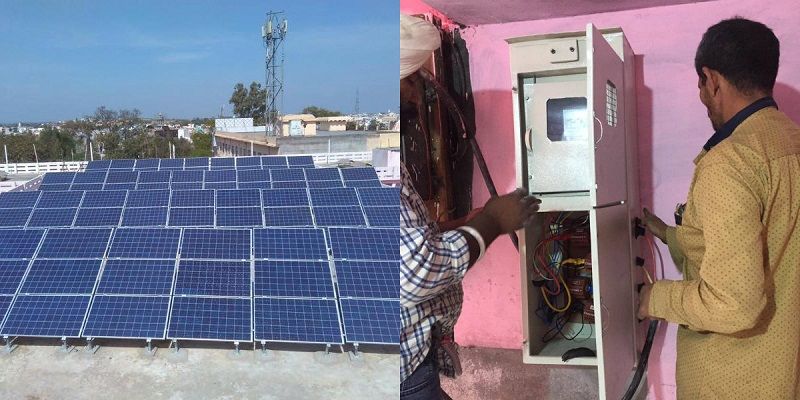A dharamshaala in Kurukshetra that runs on solar energy
With the growing popularity of solar energy, newer establishments are opting for this renewable form of energy on a daily basis. One such addition is the Gurjar Sudhaar Sabha's dharamshaala in Kurukshetra which has decided to install a solar plant in the area. Today, the solar energy powers a total of 250 rooms in the dharamshaala. Of them, there are 25 AC rooms, 45 rooms with coolers, 16 hall type rooms, and the rest are ordinary rooms. Along with that, there are five store rooms and three big halls. The plant runs the electrical load of 45KW.

The Department of Renewable Energy, Government of Haryana in collaboration with Su-Kam, has installed one 30KW grid-tie inverter with 30KW solar panels along with a net meter in the area. The entire process was subsidised by the Haryana government. The grid-tie inverter generates about 150 units of solar power depending on weather conditions. Speaking about this, Gyan Singh Advocate, Pradhan, Gurjar Sudhaar Sabha said,
Solar power holds great potential. Not only it is conducive to environment, it is pocket-friendly too. There has been a sharp decline in our electricity bills ever since we have installed this solar power plant. I am thankful to the government and Su-Kam for introducing us to the Solar power which has changed our lives for better.
The product enables the user to feed back the excess solar energy generated to the grid and earn money. Grid-tie inverters are always connected to the grid. One cannot install grid-tie inverters in areas that do not receive any mains supply. As compared to an off-grid system, a grid-tie system also provides freedom from battery maintenance making it essentially a one-time investment and a lifetime of advantage.
The inverter installed here works on the principle of net metering. In this case, the solar panels will generate approximately 4,500 units of electricity per month. So for example, this Sabha uses 3,000 units out of 4,500 units from solar power to run the load and exports the rest of 1,500 units to the electricity board. They also import 2,000 units from the electricity board to run the load during night hours over the month. So now the committee will pay only for 500 units since they have imported 1,500 units back to the electricity grid supply.
“Solar energy is India’s future. It is eco-friendly, yields 24×7 electricity and is a true value for money," Gyan added.
Do you have an interesting story to share? Please write to us at [email protected]. To stay updated with more positive news, please connect with us on Facebook and Twitter.











